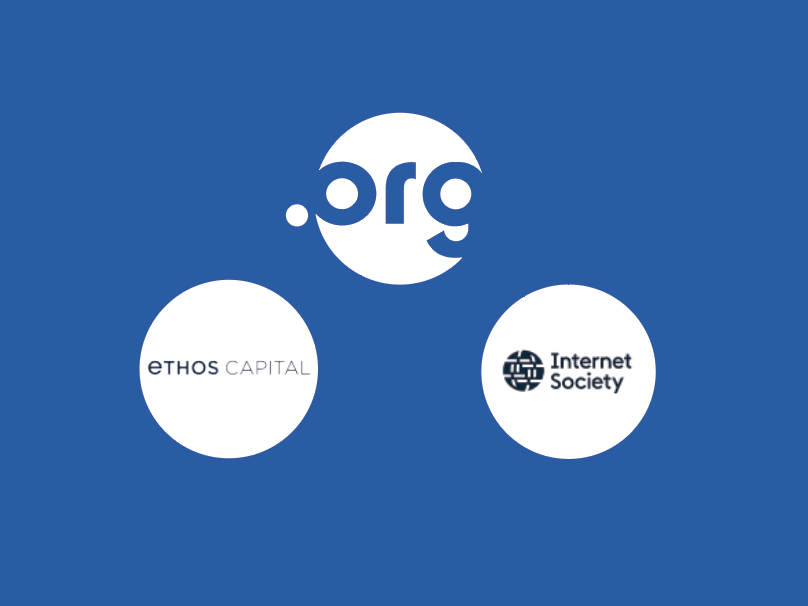AWS, Verizon Launch 5G Partnership at re:Invent
It uses AWS’ new edge computing service called Wavelength to allow developers to deploy ultra-low...
Cisco SD-WAN, ACI Anywhere Gain AWS Links
Cisco announced three new integrations aimed at helping campus, branch and data center customers...
The sale of PIR: The Internet Society Board Perspective

[Published on behalf of the Internet Society Board of Trustees.]
Last Friday we held a webinar with Internet Society members to answer questions about the sale of the Public Interest Registry (PIR). We were also able to unveil more details about the sale and its long-term contribution to the stability of the Internet Society (ISOC). On that call, we listened to our community members carefully. We heard the concerns regarding this decision from those who are worried about the future of the .ORG community, and who believe that we – as a non-profit and mission-driven organisation- are risking undermining our own legitimacy and responsibility to the public Internet.
First and foremost, we take the reaction from our community very seriously. Clearly, some members of the community believe that the decision to move forward with this transaction is harming our reputation. We fully understand the concerns expressed by our chapters and members, and we know that a lot of the criticism we have faced since announcing the transaction stems from the fact that we have not consulted openly, or been as clear as we should have been about what this sale would mean for both .ORG, and the Internet Society. It has always been the Board’s intention to be as open, transparent, and Continue reading
Juniper SD-WAN Now Handles SD-LAN
Users can provision Juniper’s EX Series switches to manage LAN fabrics and configure LAN...
Heavy Networking 491: Real-Life Segment Routing & PCE
Heavy Networking revisits segment routing on today's episode. This time we look at segment routing as it's being use in an international science network. Our guest is Nick Buraglio. We discuss which flavor of segment routing in use, the problems the network was trying to solve and how segment routing addresses them, challenges of path computation, and more.
The post Heavy Networking 491: Real-Life Segment Routing & PCE appeared first on Packet Pushers.
Deutsche Telekom Embarks on Edge Computing for IoT
The OpenStack-based platform allows IoT applications to run as VMs or in Docker containers as...
DPDK and Open vSwitch Installation on Debian 10

DPDK stands for Data Plane Development Kit. The DPDK project consists of libraries to accelerate packet processing workloads running on a wide variety of CPU architectures. Open vSwitch can use the DPDK library to operate entirely in userspace. Thanks to it, performance of Open vSwitch increases. The tutorial help you to build and install Open vSwitch using DPDK datapah on Debian 10 Buster. The second part discuses DPDK and Open vSwitch configuration and compare performance of Open vSwitch applicance with enabled/disabled DPDK.
Note: You can download my Debian 10 Buster VMDK image with installed DPDK 18.11.2 and Open vSwitch 2.11.1 for quick testiing of Open vSwitch/DPDK functionality. If you do so, you can skip the tutorial and continue with Part 2 - DPDK/Open vSwitch Configuration.
Login/password: debian/debian
Host
Software:
- x86_64 GNU/Linux Debian 10 Buster, 4.19.0-5-amd64
- QEMU emulator version 3.1.0
Hardware:
- RAM Memory 2x Kingston 8192 MB DDRIII
- CPU - Intel(R) Core(TM) i7-3610QM CPU @ 2.30GHz, 4 cores
Qemu Guest
Software:
- x86_64 GNU/Linux Debian 10 Buster, 4.19.0-6-amd64
- Open vSwitch - 2.11.1
- DPDK - 18.11.2
Hardware:
- 4 X Continue reading
You Still Need a Networking Engineer for a Successful Cloud Deployment
You’ve probably heard cloudy evangelists telling CIOs how they won’t need the infrastructure engineers once they move their workloads into a public cloud. As always, whatever sounds too good to be true usually is. Compute resources in public clouds still need to be managed, someone still needs to measure application performance, and backups won’t happen by themselves.
Even more important (for networking engineers), network requirements don’t change just because you decided to use someone else’s computers:
Read more ...Telefónica Reorients Around Tech, Waiting on 5G
“We’re ready to roll but I think we need to wait for the right moment,” Telefónica CEO José...
AWS Stacks SageMaker ML Onto Kubernetes Clusters
The SageMaker Operators for Kubernetes product allows users to tap into data housed within...
The Serverlist: Full Stack Serverless, Serverless Architecture Reference Guides, and more

Check out our tenth edition of The Serverlist below. Get the latest scoop on the serverless space, get your hands dirty with new developer tutorials, engage in conversations with other serverless developers, and find upcoming meetups and conferences to attend.
Sign up below to have The Serverlist sent directly to your mailbox.